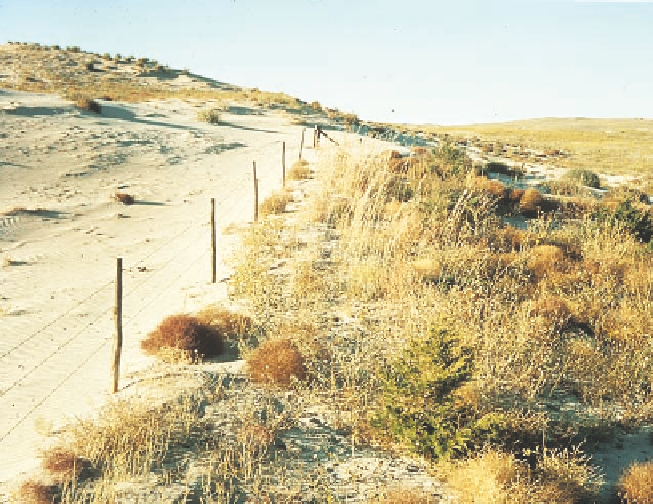Environmental Engineering Reference
In-Depth Information
factory-like production facilities in only a few areas.
As many as 100,000 cattle may be confined to a singe
feedlot complex, and 10,000 hogs may be crowded al-
most shoulder to shoulder in a giant barn.
Expanding feedlot production of meat will in-
crease pressure on the world's grain supply because
feedlot livestock consume grain produced on cropland
instead of feeding on natural grasses. It will also in-
crease pressure on the world's fish supply because
about one-third of the world's fish catch goes to feed
livestock. This industrialized approach increases meat
productivity, but it has a number of harmful environ-
mental effects, as discussed next.
Science Case Study: Some Environmental
Consequences of Meat Production
Industrialized meat production has an enormous
environmental impact.
The meat-based diet of affluent people in developed
and developing countries has a number of harmful en-
vironmental effects. More than half of the world's
cropland (19% in the United States) is used to grow
livestock feed grain (mostly field corn, sorghum, and
soybeans). Livestock and fish raised for food also con-
sume 37% of the world's grain production and 70% of
U.S. grain production.
Meat production uses more than half of the water
withdrawn from the world's rivers and aquifers each
year. Most of this water is used to irrigate crops fed to
livestock and to wash away animal wastes.
About 14% of U.S. topsoil loss is directly asso-
ciated with livestock grazing. Cattle belch out 16% of
the methane (a greenhouse gas that is 25 times more
potent than carbon dioxide) released into the atmo-
sphere. Also, some of the nitrogen in commercial
inorganic fertilizer used to grow livestock feed is con-
verted to nitrous oxide, a greenhouse gas released
from the soil into the atmosphere.
Livestock in the United States produce 20 times
more waste (manure) than is produced by the coun-
try's human population. A single cow produces as
much waste as 16 humans. Manure washing off the
land or leaking from lagoons used to store animal
wastes can kill fish by depleting dissolved oxygen.
Animal wastes from feedlot facilities are typically
stored in enormous open lagoons, which can rupture
or leak and contaminate groundwater and nearby
streams and rivers. In 1999, torrential rains from
Hurricane Floyd caused a number of hog and poultry
waste lagoons in southeastern North Carolina to
overflow and spill their wastes into local rivers. Liv-
ing near a feedlot or animal waste lagoon is also a
nasal assault. According to the Environmental Protec-
tion
Figure 10-20
Natural capital degradation:
overgrazed rangeland
(left) and lightly grazed rangeland (right).
groundwater and polluted more than 43,000 kilome-
ters (27,000 miles) of streams in about half of U.S.
states.
Overgrazing
occurs when too many animals
graze for too long and exceed the carrying capacity of
a grassland area (Figure 10-20, left). It lowers the NPP
of grassland vegetation, reduces grass cover, and
when combined with prolonged drought can cause de-
sertification. It also exposes soil to erosion by water
and wind and compacts soil (which diminishes its ca-
pacity to hold water). Limited data from surveys in
various countries by the FAO indicate that overgraz-
ing by livestock has caused as much as one-fifth of the
world's rangeland to lose productivity, mostly as a re-
sult of desertification (Figure 10-11). Overgrazing by
cattle can destroy the vegetation on and near stream
banks (Figure 8-28, left, p. 178). Protecting such land
from further grazing can eventually lead to its ecologi-
cal restoration (Figure 8-28, right, p. 178).
Producing meat can also endanger wildlife
species. According to a 2002 report by the National
Public Lands Grazing Campaign, livestock grazing in
the United States has contributed to population de-
clines in almost one-fourth of the country's threatened
and endangered species.
Science: Producing Meat More Sustainably
We can reduce the environmental impacts of meat
production by relying more on fish and chicken and
less on beef and pork.
Livestock and fish vary widely in the efficiency with
which they convert grain into animal protein (Fig-
ure 10-21, p. 224). A more sustainable form of meat
Agency,
livestock
wastes
have
contaminated


